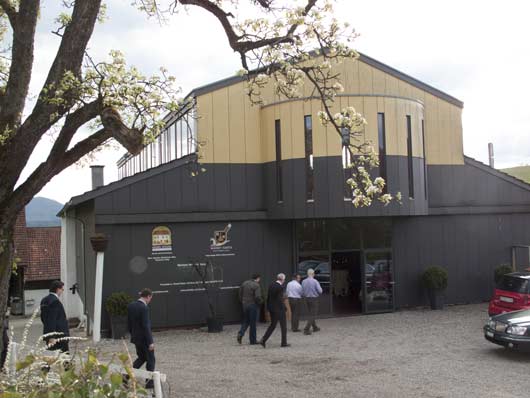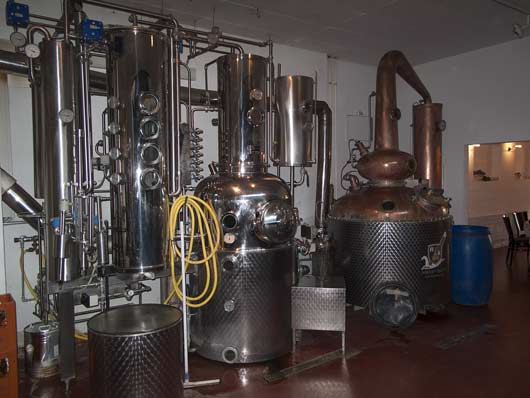
Käser Schloss/ Whisky Castle
Although I have been visiting most of the Scottish distilleries, this was my first visit of a Swiss distillery. Surprisingly, this took place following in a few years ago, but I never took the effort to publish it so far.
Käser Schloss distillery is located in the small and beautiful village of Elfingen, located mid-way between Basle and Zurich. Once you arrive in the village, you cannot miss the distillery situated on a small hill overlooking the village ”centre”. The distillery is a very modern building and once you passed the front door, you simply wonder where is the Whisky Castle produced?
 |
| The whisky distillery of Käser Schloss / Whisky Castle in Elfingen, Switzerland |
With its big hall surrounded by a large balcony with a bar and a large window looking through the warehouse and its impeccable cleanliness, you might have the impression of visiting an art gallery. On the left hand side, there is a gleaming stainless still for distillation of schnapps and hidden slightly behind it a single copper pot still, where the whisky is distilled.
 |
| The still house with the copper still used for the whisky distillation on the back, and stills for the schnapps at the front |
The first distillation in the copper steel took place in 2003. The production process is rather different from Scotch single malt, since the scale of production is very limited (about 10,000 litres per year). Forget about malting floors, kiln, malt loft and other mash tun. The malted barley is smoked with birch wood, typically used for smoking meat in Switzerland and sourced from a maltser. A further particularity is the use of heavily roasted barley (“chocolate” barley, as used for the Glenmorangie Signet) in varying proportion. Spring water is used, but some small batches with melted snow have been produced.
The fermentation takes place either in a stainless container or in plastic containers typically used for the fermentation of the fruits for the schnapps production, but experimentations are planned with distillation of wash coming from a brewery. Whisky is double distilled in a single copper pot still and the final distillate is filled in casks without any reduction. Diverse types of casks are used: ex-wine oak casks (from France, e.g., ex-Sauternes or eventually from Hungary), fresh French oak casks from the Limousins, ex-refill sherry casks, but even more exotic, such as Swiss Oak maturation or finish in chestnuts casks.
 |
| Inside of the warehouse, with mainly oak casks, but also chestnuts casks! |
The whiskies are bottled at a rather young age (about 3 years old) but stocks have been laid down for a longer period. Interestingly, since Switzerland has no law regarding the maturation of spirits (NB: the law allowing production of whisky dates from 1999), cask sampling is a major issue with the customs. Once the cask has been filled, it is sealed (with a lead stamp) and once a year, a customs officer comes to the distillery so that the staff can proceed with the sampling of their casks. In addition, each time a cask is being emptied, a custom officer must come. One can hope that the Swiss customs will revise these regulations!
Special thanks to AAM and Ian B for the invitation.